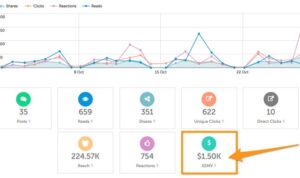Writing for Online Audience dives into the art of captivating digital readers with tailored content, exploring the nuances of online communication with a fresh perspective.
From understanding the importance of audience analysis to crafting compelling headlines, this topic delves into the dynamic world of online content creation.
Importance of Writing for Online Audience

Understanding the target online audience is crucial for effective communication in the digital age. With the vast amount of information available online, tailoring your writing to suit the preferences and behaviors of your audience is key to capturing their attention and delivering your message effectively.
Differences in Writing Styles, Writing for Online Audience
Writing for online audiences differs from traditional writing styles in several ways. Online content tends to be more concise, scannable, and engaging to cater to the short attention spans of internet users. Additionally, utilizing multimedia elements such as images, videos, and infographics is common in online writing to enhance the reader’s experience.
Impact of Audience Analysis
Conducting audience analysis plays a significant role in the success of online content. By understanding the demographics, preferences, and behaviors of your target audience, you can tailor your writing style, tone, and content to resonate with them effectively. This personalized approach can lead to higher engagement, increased traffic, and ultimately, better results for your online presence.
Characteristics of Online Audiences

When it comes to online audiences, there are several key characteristics that influence how they interact with content. From short attention spans to varying levels of digital literacy, understanding these traits is essential for creating engaging and effective online material.
Short Attention Spans
Online audiences are known for having short attention spans, often scrolling quickly through content. This means that it’s crucial to grab their attention right away with compelling headlines, visuals, and concise information. Keeping paragraphs short and using bullet points can also help maintain their focus.
Diverse Demographics
Online audiences come from diverse backgrounds and demographics, with varying interests and preferences. Factors like age, gender, location, and cultural background can all influence how they consume content. Tailoring your writing to appeal to different demographic groups can help reach a wider audience.
Varying Levels of Digital Literacy
Not all online audiences have the same level of digital literacy. Some users may be tech-savvy and comfortable navigating the online world, while others may struggle with basic digital skills. It’s important to consider this diversity in your writing by avoiding jargon, explaining technical terms, and providing clear instructions.
Role of User Personas
User personas are fictional representations of your target audience, based on real data and research. By creating detailed user personas, you can better understand the needs, preferences, and behaviors of your online audience. This allows you to tailor your content to meet their specific needs and interests, ultimately leading to more effective communication.
Strategies for Engaging Online Audiences
To effectively engage online audiences, it is crucial to create content that captures their attention and keeps them interested. Here are some key strategies to consider:
Creating Compelling Headlines and Hooks
One of the first things that online readers notice is the headline of your content. A compelling headline can draw them in and make them want to learn more. Use power words, numbers, or intriguing questions to pique their curiosity. Additionally, incorporating hooks in the introduction can further engage readers and entice them to continue reading.
Utilizing Visuals, Multimedia, and Interactive Elements
Visuals, multimedia, and interactive elements such as videos, infographics, and polls can enhance audience engagement significantly. These elements break up the text, make the content more visually appealing, and provide a more interactive experience for the audience. Incorporating these elements can help hold the audience’s attention and encourage them to stay on your page longer.
Incorporating Storytelling and Personalization
Storytelling is a powerful tool for connecting with online audiences on a personal level. By sharing real-life stories, anecdotes, or case studies, you can create a sense of authenticity and build a stronger emotional connection with your readers. Personalizing your content by addressing the audience directly or using inclusive language can also make them feel more engaged and valued.
Optimizing Content for Online Audiences: Writing For Online Audience
In the digital age, optimizing content for online audiences is crucial to ensure your message reaches a wider audience and resonates effectively. By following best practices and focusing on readability, scannability, and mobile responsiveness, you can enhance the overall user experience and drive engagement with your content.
Best Practices for Optimizing Content for Search Engines
To optimize content for search engines, it’s essential to conduct research and strategically incorporate relevant s throughout your content. Utilize meta tags, headings, and alt text for images to improve search engine visibility. Additionally, create high-quality, original content that provides value to your audience to boost your search rankings.
Importance of Readability, Scannability, and Mobile Responsiveness
Readability is key when optimizing content for online audiences. Use clear and concise language, break up text with subheadings, and incorporate bullet points to make your content easily digestible. Scannability is also crucial, as online readers tend to skim content quickly. By using white space effectively and structuring your content in a visually appealing way, you can capture and retain your audience’s attention. Moreover, ensure your content is mobile-responsive to accommodate users accessing your content on various devices.
Tips for Structuring Content
When structuring your content, consider using subheadings to organize information and guide readers through your text. Bullet points can help highlight key points and break up dense paragraphs. Incorporating white space between sections can also improve readability and overall user experience. By structuring your content effectively, you can keep your audience engaged and encourage them to explore further.





